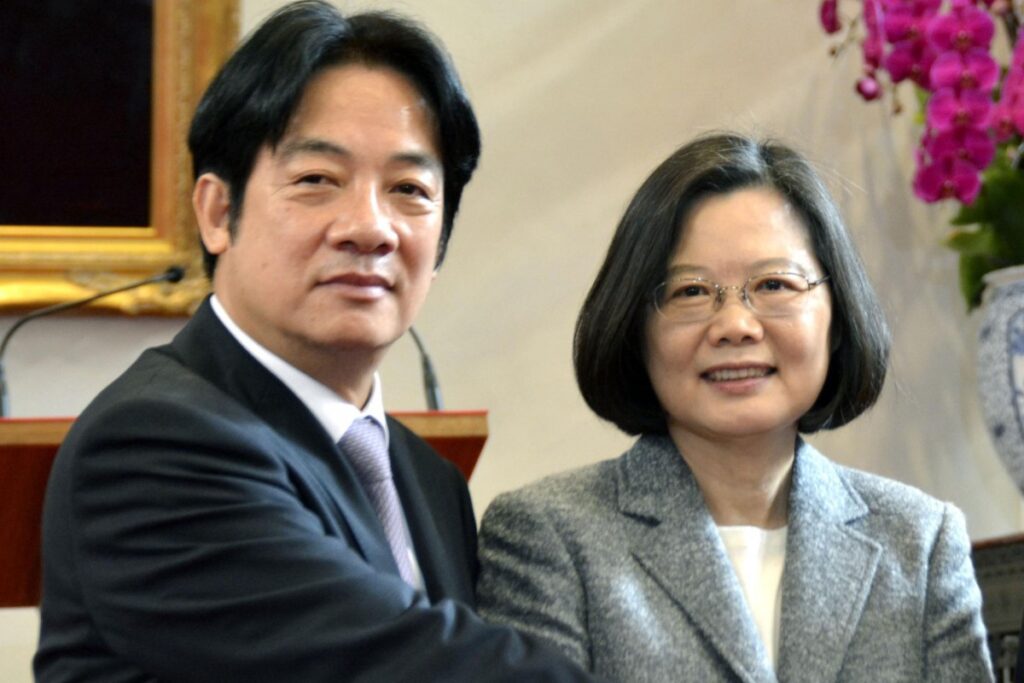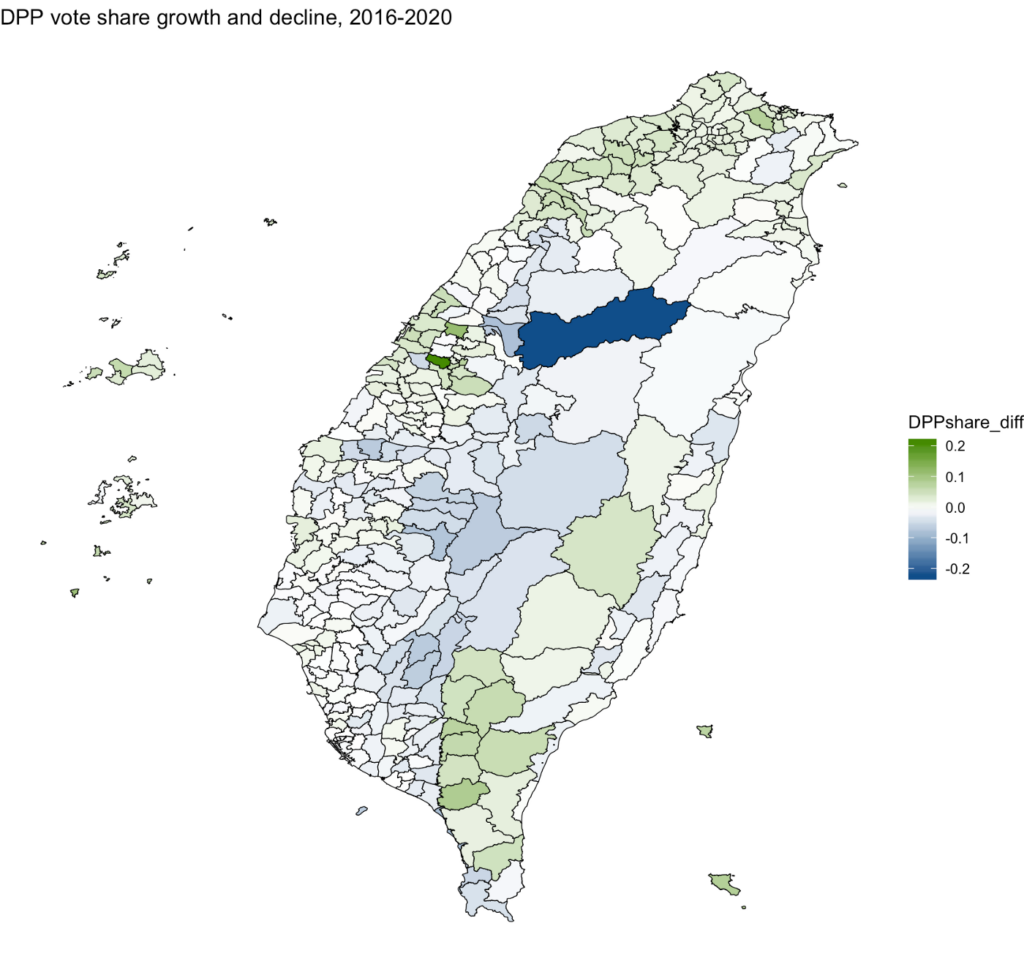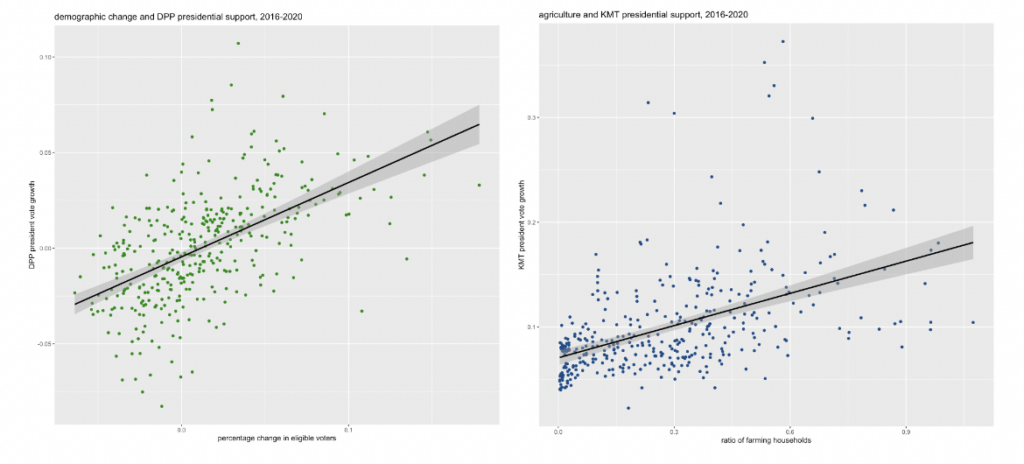Kevin Wei Luo (A.M. ‘15), PhD candidate in Political Science at the University of Toronto, examines the impact of Taiwan’s 2020 general election on the island’s political parties.

International media has touted Tsai Ing-wen and the Democratic Progressive Party (DPP) victory over Han Kuo-yu and the Kuomintang (KMT) as an ideological triumph of the DPP’s anti- ‘one China two systems’ stance and the repudiation of the KMT’s mainland-friendly approach. While this may partly explain Tsai’s historic vote count — the highest ever in Taiwan’s direct Presidential elections — another important dimension is the divergent fates of the parties’ organizational capacities after the 2018 local council and mayoral elections.
The DPP’s recovery from the disastrous 2018 electoral cycle — in which it only won 6 of 22 districts and lost 9 it previously held — is in many ways a remarkable turnaround for the party. It is easy to forget that Tsai’s popularity was in sharp decline, and was in fact neck and neck with Han until late summer 2019, coincidentally around the same time as the Hong Kong protests.

Also of note was how the DPP was able to weather internal disputes within the party by co-opting the presidential primary challenger William Lai, former mayor of Tainan and Premier, to run on the ticket as Tsai’s vice-presidential candidate. Party elder Su Tseng-chang’s return to the premiership after 2018 also helped to balance factional struggles within the party and created better channels for the Tsai administration’s policy communication efforts, particularly on the issue of same-sex marriage and policies encouraging investments by returning Taiwanese firms formerly based in mainland China.
At the local level, the DPP were able to recover the southern vote thought to be lost in ’18 by successfully capturing every single legislative seat south of Zhuoshui River (the traditional demarcation of Blue-Green political geography). While this is partly due to the mobilization of returning young voters, whose voter registration remains in these districts, this can also be attributed to a successfully rekindled relationship with more traditional DPP supporters whose support returned after the contentious primaries.
Yet though their rallying behind Tsai illustrates the DPP’s strong organizational resilience, the party’s lackluster performance on the proportional representation ballot remains a cause for concern for the DPP (an over 20 percent gap compared with the presidential vote). This suggests that voter support for Tsai does not necessary equate to party loyalty for the DPP. It will also be interesting to observe how cliques within the DPP will decide Tsai’s successor in 2024, as Tsai herself does not possess a strong factional base.

On the other hand, the KMT’s abrupt loss of momentum post-2018 signals deep underlying issues within its organization structure. While the KMT’s vote count actually increased compared to its abysmal performance in the 2016 presidential election, the campaign itself was still marred by significant dysfunction. From the messy primary process — most bizarrely resulting in the nomination of a mayor (Han) who had then only been in a year in office, and the recruitment and then acrimonious exit of Foxconn tycoon Terry Guo — to the controversy surrounding its initial proportional representation party list, which was lambasted for being too geriatric, too pro-reunification (and then was ultimately hastily re-ranked). These issues demonstrate a lack of coordinated internal party mechanisms in comparison with the DPP.
Han’s campaign also lacked strong support from party elites. For example, former legislative speaker and Han-backer, Wang Jin-Ping, was conspicuously absent throughout the campaign. Other party bigwigs foot-dragged in publicly joining Han on the campaign trail due to Han’s controversial image. The KMT’s organizational machinery, in a sense, did not mesh well with Han’s unique brand of media promotion and campaigning language, including telling his supporters not to trust ‘fake polls’ and asking them to falsely respond as Tsai supporters whenever polled. Immediately after the 2020 general election, young party members demanded internal party reform within the KMT, which resulted in the resignation of several top party officials and party leader Wu Dun-yi. However, without clear emerging leaders to take the helm, a power vacuum is likely to persist for the foreseeable future.
Beyond the DPP and KMT, the arena of anti-establishment parties also underwent some significant change. James Song’s People First Party (PFP), historically a force to be reckoned with in post-2000 Taiwanese politics, was marginalized by voters, generating lackadaisical support in Song’s presidential bid and receiving zero seats in the legislative elections. Two relatively new parties have taken the PFP’s place: the New Power Party (formed in the aftermath of the 2014 Sunflower Student Movement) and the Taiwan People’s Party (led by the non-partisan Taipei mayor Ko Wen-je).
For the New Power Party, while its national vote count for Taiwan’s proportional seat increased from the seat’s inception in 2016, the party lost all of its previous Single-Member District local seats due to a bitter internal disagreement over whether to cooperate with the DPP, followed by the exiting of key party members. On the other hand, while the Taiwan People’s Party won a noteworthy 5 seats in the Proportional Representation list, its local legislative candidacies were not competitive. Curiously, the only local seat that was won by an upstart populist party was in Taichung’s Second District by Chen Po-Wei and his ultra pro-independence Taiwan Radical Wing, a result of the entrenched Yen family clientelist machine running under the KMT ticket. In sum, under Taiwan’s short but entrenched bipartisan legacy, third parties will continue to find it hard to remain competitive in localized elections.
Of course, this is not to say that larger structural factors did not matter. Though the author would still caution against interpreting the general election results as a significant endorsement of the DPP’s cross-strait policy, a pre-election survey conducted by Academia Sinica suggested there was a strong correlation between Tsai supporters and support for the ongoing Hong Kong protests. While it is likely that cross-strait issues will remain the centrifugal force on which Taiwanese political parties position themselves along the ideological spectrum, the larger factor of changing urban-rural partisan identification patterns may ultimately provide the key driving force behind future party strategies, notably the DPP’s expansion into key Northern urban districts and suburbs, along with the KMT’s increased gains in several rural communities across Central and parts of Southern Taiwan. With continued partisan entrenchment in these areas, it is likely that there will be a growing urban-rural divide on cross-strait policies as well, with the urban middle class endorsing stronger decoupling with the Chinese economy, and rural communities supporting deeper socioeconomic relations with the mainland.
Kevin Luo is a Ph.D. candidate in political science at the University of Toronto, and a graduate of Harvard’s Regional Studies East Asia program.


